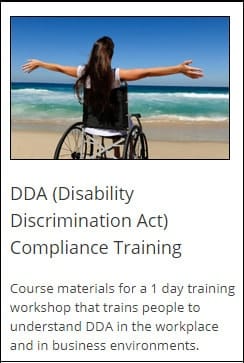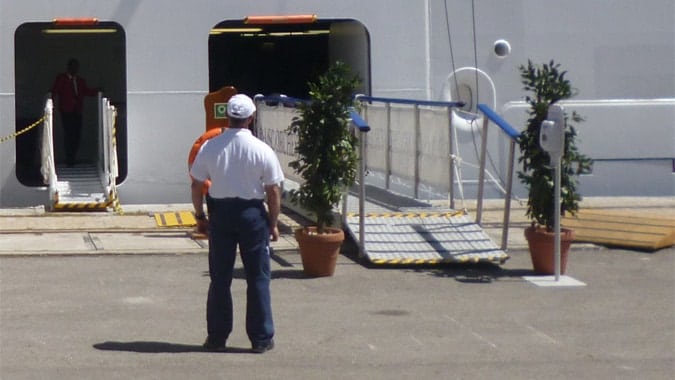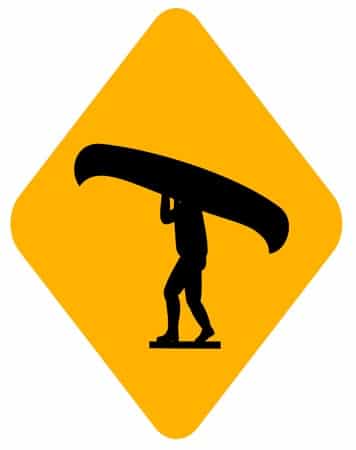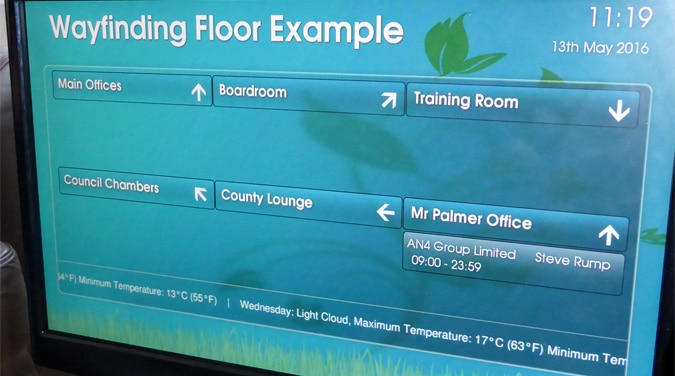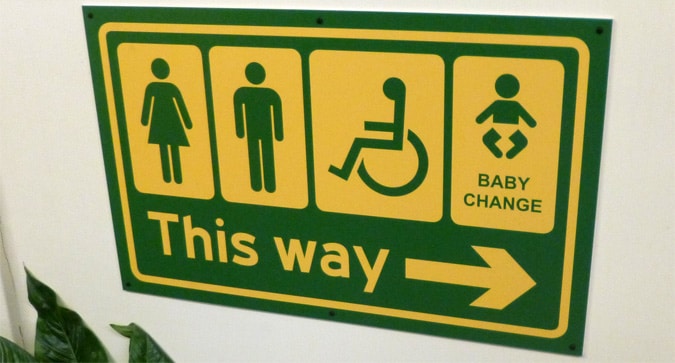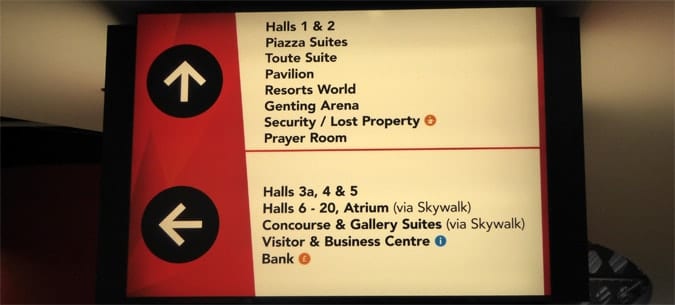Last Updated on October 14, 2023
Access for disabled travellers has arguably improved a lot in the last twenty years, yet there is still so much that can be done and which should be done.
Still there are many situations and travel environments which fail to provide in the way they should, for wheelchair users and for people with other disabilities.
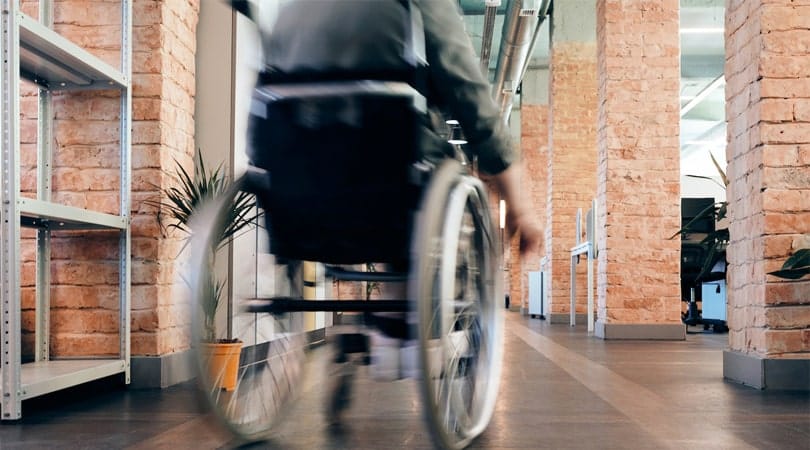
Let us look in this post at DDA compliance access for wheelchair users on Holiday
Table of Contents
Cruise Lines and DDA Compliance Access
On a recent P&O cruise from Southampton, England, cruising down to the southern tip of Spain it was great to see a number of wheelchair users on the ship.
I say great in that it is good to see that the cruise industry seems to be catering to the ‘accessible travel’ industry and making efforts to be inclusive for people of all ages and abilities.
One situation which needs to be carefully considered when selecting a cruise holiday is the question of cruise ports and which ports can be disembarked from without a tender boat.
When a ship is unable to dock alongside the port, the cruise ship will often lay anchor out in the sea, then a small boat called a tender is needed to move passengers between the ship and shore.
On a lot of ships, unless a passenger has some form of self-mobility without the aid of a chair or stick, they are not then allowed to disembark at tender ports.
On a recent cruise, this was the case in the port of Guernsey, UK On talking with some wheelchair users in the evening over dinner, it became clear that being stuck onboard was not a problem because the wheelchair and tender situation had been clarified and known before the cruise was booked.
For this reason, it was considered a bit of a problem.
One problem with that was highlighted though by one passenger who needed the use of a wheelchair was the size of the room.
Although considered a suitable room for accessible travel, with the chair inside the room, there was no space to put the easily walk past the bed.
It was also mentioned by some people with accessibility issues, that in almost every situation, the staff always seemed to make an effort to try and be helpful.
The problem in some situations though seemed to be that staff as friendly as they were, lacked the training from management to sometimes, help as well in
No room for a wheelchair in the room. Staff so often try to be helpful – they are just not trained to deal with disabled passengers sometimes, as they maybe could be.
This was actually highlighted by Yau et al (2004) in their study of ‘Traveling with a disability’, who found that the way in which airline staff handled wheelchairs, was too often problematic.
Hotels and DDA Compliance Access
A friend was recently in a hotel in Spain with his fiancée, who is wheelchair bound and he has learned the hard way, to ensure that he calls the hotel ahead of time, to ensure that the hotel is accessible, in all respects.
On the recent trip though, the hotel which promised that it provided good access turned out to have 4 steps directly in front of the lifts (elevators in American English).
Accessing was not easy and a wheelchair user by themselves would have struggled to use the lift.
This example is not typical but neither is it unusual. Standards between different countries can also be substantially different.
This makes international travel sometimes a challenge cognitively for some disabled travellers.

Disabled travellers though are known from research to be highly loyal customers to travel companies that provide an excellent service for their needs, thus if not from an ethical and moral point of view, there also exists a commercially viable reason for travel providers to want to take an interest in ensuring the provision needed for all travellers.
Yet, DDA compliance access seems to be failing in locations we audit!
This provision needs to not only be for those in wheelchairs but also for those with visibility problems, for the elderly and for those with mobility issues of all types.
From a wayfinding point if view, signage is only one aspect of helping travellers to navigate through travel spaces, be it a hotel, an airport or an attraction, or from home to holiday destination.
The use of the space by architects needs to consider all users, not just the able-bodied.
Dr Paul Symonds
There may be a walkway to go up a level in the airport but how does the mobility-impaired traveller get to the next level?
If there is a lift (elevator) but it is not immediately visible to the eye, is it signposted clearly?
Is there specific signage in place from where the disabled parking spaces are such as in an airport, to help the person/people concerned to navigate to the main terminal?
On interviewing elderly friends recently, the wife now in need of a wheelchair for getting around after a stroke, on asking them about their travel experiences, they interested stated that the first place they head to once they arrive at the main airport building, is to look for the ‘Special Assistance’ telephone or desk, rather than looking for the check-in desk.
What designers and able-bodied users may think of as obvious (i.e. the wayfinding route is to enter the main terminal and navigate straight to the check-in desks) is not necessarily the reality.
In order to make travel locations and spaces more accessible for all users, I would suggest that designers, architects and travel providers ensure that they consult those sometimes unforgotten and catered for users. Everyone deserves a right to travel!
Improving DDA Compliance Access in Travel
What sometimes makes following a route harder, rather than the corporeal effort needed by a mobility-impaired traveller, is the difficulty generated by other travellers.
The driver dropping someone off and blocking the dropped kerb, at the arrivals area of an airport.
The staff in an airport who lay out temporary signage because a terminal is being revamped and with the signage good for those able to walk stairs but wheelchair ramps all but forgotten.
Or someone involved and passionate about wayfinding, and equally as passionate about ensuring this is for ALL travellers, I would suggest that mobility considerations need to be more central and included in all planning documentation for design.
Whilst different countries have different legislation, and whilst much is being done positively, we can still can more!
Dr Paul Symonds has a PhD in Wayfinding from Cardiff Metropolitan University in the UK. Paul works with the signage industry, airports and other locations providing wayfinding audits, consultancy and training.

